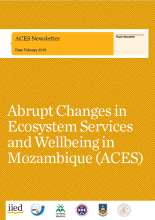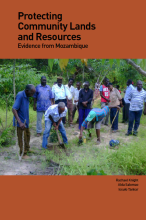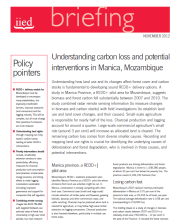/ library resources
Showing items 1756 through 1764 of 1818.The implementation of the South–South REDD process was made achievable by those who assumed leadership roles (political and technical), facilitated the meetings and the logistics on the ground (especially the consultations and training) and acted as resources people.
Social Justice in Forestry – as a project of FGLG with funding from the EC – supported the Mozambique Forest Governance Learning Group (FGLG-Mozambique) from January 2009 to December 2013, building on a first phase of EC support from April 2005 to December 2008 and an even earl
ACES is a three-year (2014 -2017) research project that is being implemented in Mozambique with the main purpose being to contribute to poverty alleviation in Mozambique by co-producing new knowledge of the dynamic links between land use change, Ecosystem Services (ES) and the
Mozambique currently has one of the highest rates of land concessions throughout Africa.
Mozambique is the 8th most vulnerable country to climate change and is one of the poorest countries in the world with a high dependency on foreign aid. The population is primarily rural and dependent on agriculture, with 60% living on the coastline.
This study examines the agricultural policies and strategies that have influenced agricultural development in Mozambique, the support structures that have been put in place, and the realities and challenges of their implementation.
Understanding how land use and its changes affect forest cover and carbon stocks is fundamental to developing sound REDD+ delivery options.
Agriculture is an important engine for economic growth in Africa, but effective agricultural strategies to support rural development and poverty alleviation are scarce.
For two reasons the miombo woodlands of eastern and southern Africa provide an important opportunity for developing pro-poor payments for avoided deforestation and degradation.
Pagination
Land Library Search
Through our robust search engine, you can search for any item of the over 73,000 highly curated resources in the Land Library.
If you would like to find an overview of what is possible, feel free to peruse the Search Guide.









